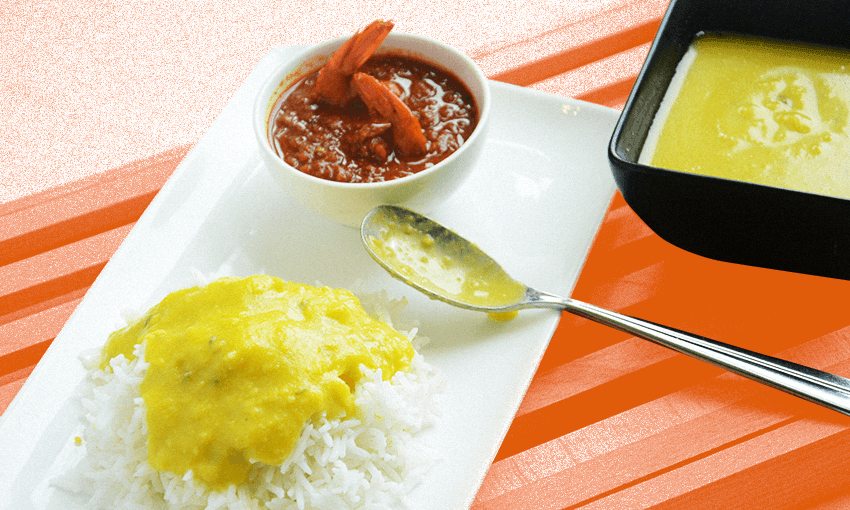This simple but creamy and delicious yellow dal was my first meal and, if I have it my way, will be my last.
I’m blessed to belong to a foodie family and when we travel, the question “what will we eat?” occupies more brain space for the entire family than “where will we stay?”.
But no matter where we travel or for how long, one thing remains constant – on at least one of the days, we will eat dal. If it’s a really short trip and we can’t fit dal in, then we will eat it as our first meal back home. Same if we’ve been travelling for days. This year we celebrated Christmas in Napier and since all the restaurants were going to be shut, mum brought a giant box of dal with her on the flight from Auckland. We took over the reading room at our accommodation and indulged in freshly steamed rice, luscious creamy dal and generous lashings of sour and spicy mango pickle.
Because nothing spells home or family more than a big bowl of dal.
There’s many many kinds of dal eaten across India but almost all communities have a plain yellow dal that’s part of their family repertoire. For us Parsis, it’s dhandar.
There’s not much to it. It’s made by combining toor dal (yellow split pigeon pea lentils), turmeric, salt and water and boiling it until it becomes a delicious pot of golden goodness. Of course what makes the dish magic is the tadka of ghee that goes in when the dal is cooking and then again at the end.
Dhandar was the first meal I ate when I started eating solids as a baby and if I have my way, it will also be my last.
DHANDAR DAL
Serves four
For the dal
- 2 cups toor dal (yellow split pigeon pea lentils, sometimes called arhar dal)
- 4 cups water, plus more for soaking
- 1.5 tsp ground turmeric
- ½ tsp cumin seeds
- 1 tbsp ghee
- Salt to taste
For the tadka
- 2 tbsp ghee
- 2 cloves garlic, finely chopped
- ¼ tsp cumin seeds
Place toor dal in a large bowl; add water to cover it by around 3cm. Soak at room temperature for at least 20 minutes, ideally 1-2 hours. Soaking the dal is crucial. It improves digestion and nutrition absorption as it neutralises the lectins and phytates present in lentils that often cause gas or bloating. It also helps the dal cook faster!
Drain the soaked dal, rinsing it an extra time.
In a dutch oven or heavy bottomed pan, bring the ghee to heat. Add the cumin seeds and once they sizzle, the turmeric powder. Mix and add in the dal followed by the four cups of water and salt. Cover and cook on medium-low, stirring occasionally to prevent dal from boiling over or burning on the bottom until the dal is tender and breaking apart – about an hour or an hour and a half.*
Allow to cool slightly. Using a hand blender, give the dal a blend until it is a thick, pumpkin soupy texture.
In a separate small pan, heat up the ghee until it is sizzling hot. Add the garlic and allow it to become golden brown. Add the cumin seeds and switch off the heat as soon as the seeds sizzle. This will all happen very fast so be prepared with all your ingredients.
Add the ghee tadka to the dal.
If the dal seems too thick, gradually add in a bit more water. Adjust the seasoning if required.
Serve hot with steamed rice and a spicy mango pickle or Dolly Mumma’s Carrot Chutney.
*You can also cook your dal in a pressure cooker to make it faster. Allow the cooker to come to pressure at full heat. Turn the heat to medium and cook a further 15 minutes. Release the pressure.



